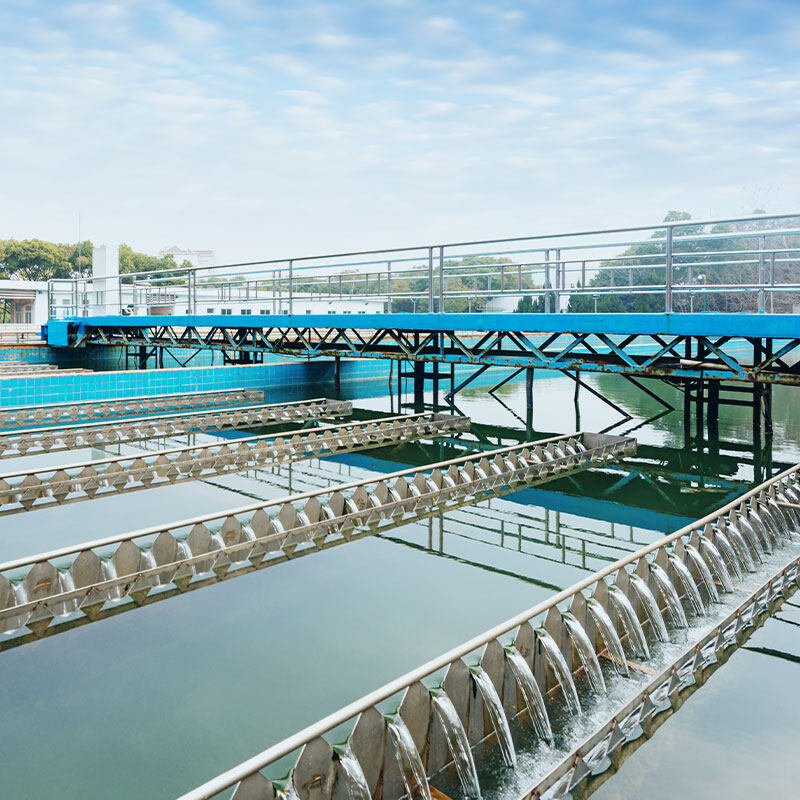Questions of Activated Sludge
Biological treatment is the most widely used and practical technology in sewage wastewater treatment engineering. There are two categories: one is called Activated Sludge Process, and the other is called Biofilm Process.
Activated sludge process is a form of aerobic wastewater treatment based on the biochemical metabolism of suspended biological groups.
What is Activated Sludge?
From the microbial point of view, the sludge in the biochemical tank is a biological group composed of various bioactive microorganisms.
If the sludge particles are observed under a microscope, it can be seen that there are a variety of microorganisms - bacteria, molds, protozoa and metazoans (such as rotifers, insect larvae and worms), which form a food chain. Bacteria and molds can decompose complex organic compounds, obtain energy necessary for their own activities and construct themselves. Protozoa feed on bacteria and molds and are consumed by metazoans, which can also live directly on bacteria. Such flocculent sludge particles filled with microorganisms and capable of degrading organic matters are called activated sludge.
In addition to being composed of microorganisms, activated sludge also contains some inorganic substances and organic substances adsorbed on the activated sludge that can no longer be biodegradable (i.e. metabolic residues of microorganisms). The water content of activated sludge is generally 98-99%. Like alum flowers, the activated sludge has a large surface area, so it has a strong adsorption capacity and the ability to oxidize and decompose organic matters.
How to Evaluate Activated Sludge in Activated Sludge Process and BiofilmProcess?
The discrimination and evaluation of activated sludge growth by activated sludge method and biofilm method are different.
In the Biofilm Method, the evaluation of the growth of activated sludge mainly uses the microscope to directly observe the biological phase.
In the Activated Sludge Method, in addition to directly observing the biological phase with a microscope, the commonly used evaluation indicators for evaluating the growth of activated sludge include: mixed liquid suspended solids (MLSS), mixed liquid volatile suspended solids (MLVSS), sludge sedimentation ratio (SV), sludge sedimentation index (SVI), etc.
What is Mixed Liquid Suspended Solid (MLSS)?
Mixed liquid suspended solid (MLSS) is also called sludge concentration, which refers to the weight of dry sludge contained in the mixed liquid of biochemical tank per unit volume, in mg/l, used to characterize the concentration of activated sludge. It includes organic matter and inorganic matter. Generally speaking, the MLSS value in SBR biochemical tank should be controlled at about 2000-4000mg/L.
What is Mixed Liquid Volatile Suspended Solids (MLVSS)?
The mixed liquid volatile suspended solids (MLVSS) refers to the weight of volatile substances in dry sludge contained in the mixed liquid of biochemical tank per unit volume, which is also mg/l. Since it does not include inorganic substances in activated sludge, it can accurately represent the number of microorganisms in activated sludge.
What is Sludge sedimentation ratio (SV)?
Sludge sedimentation ratio (SV) refers to the volume ratio (%) of precipitated sludge and mixed liquor after 30 minutes of static sedimentation of mixed liquor in a 100 ml measuring cylinder in the aeration tank. Therefore, it is sometimes expressed as SV30. Generally, the SV in the biochemical tank is 20-40%. The determination of sludge sedimentation ratio is relatively simple, and it is one of the important indicators for evaluating activated sludge. It is often used to control the discharge of excess sludge and timely reverse sludge bulking and other abnormal phenomena. Obviously, SV is also related to sludge concentration.
What is Sludge index (SVI)?
Sludge volume index (SVI) is the full name of sludge volume index. It refers to the milliliter of the volume of 1g dry sludge in the wet state. Its calculation formula is as follows: SVI = SV * 10/MLSSSVI removes the influence of sludge concentration factors, which can better reflect the coagulability and sedimentation of activated sludge. It is generally believed that when 60 < SVI < 100, the sludge sedimentation performance is good. When 100 < SVI < 200, the sludge sedimentation performance is generally 200 < SVI < 300, Sludge expansion trend When SVI > 300, the sludge has expanded.
#QDEVU #WASTEWATERTREATMENT #SEWAGETREATMENT #WATERTREATMENT



